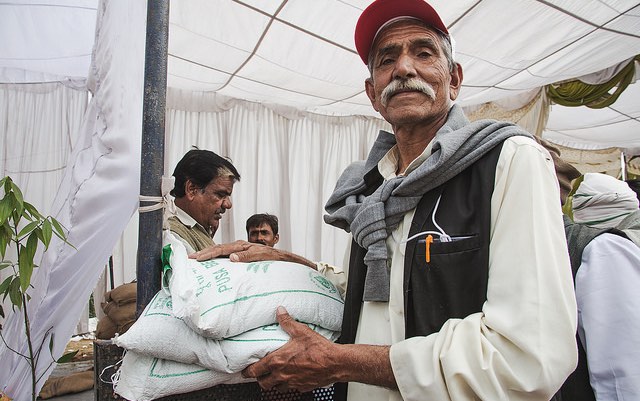The Indian government’s renaming the Ministry of Agriculture as the Ministry of Agriculture and Farmers’ Welfare, along with its promise to double farmers’ income by 2022, signal a clear shift in the nation’s agricultural policy.
This shift in focus from food production and productivity to farmers’ income and welfare was essential. While increasing productivity is one way to increase farmers’ income, it is even more important to ensure remunerative farm harvest prices—or else bumper production can often turn into a farmers’ nightmare as prices crash. India had record food production in 2017-18, but farmers’ income remained low and stagnant.
However, in the four years it has been in power, the National Democratic Alliance (NDA) government’s aim to doubling farmers’ income remains a distant dream and agriculture continues to be a high-risk, low-return enterprise.
Meanwhile, the government has initiated many other reforms and launched new schemes to benefit the agrarian community, but with little effect.
For instance, the National Institution for Transforming India’s (NITI Aayog) proposed Model APMC Act and renewed efforts to deregulate the wholesale agricultural market did not find many takers, with most states showing no interest.
The National Agriculture Market, or E-NAM, was yet another initiative to create a unified national market where farmers and traders from across India could buy and sell their produce easily. Though E-NAM covers 90 commodities across 470 APMC mandis, little has changed on the ground—the markets are far from getting integrated and most farmers are still dealing with local traders.
The government’s recent move to raise the minimum support price (MSP) to ensure better returns to farmers has also received muted response, as it procures only rice, wheat and some pulses at MSP. In 2013-14, less than 10 percent farmers sold their crop at MSP.
Madhya Pradesh tried Bhavantar Bhugtan Yojana (BBY) to ensure farmers got at least the MSP even for crops that are not publicly procured. Less than one-fourth of the farm community in the state benefited from the scheme. Extending BBY to all crops across India may not also be financially viable and may help traders more than the farmers. In fact, controlling prices through public procurement, or BBY, may not be the way to increase farmers’ income. We must invest in market reforms and new aggregation models for smallholders to increase their bargaining power and reduce transaction costs.
While attempting market reforms, the government continues to use old, draconian measures, including stocking restrictions and bans on exports and futures trading, in a knee-jerk reaction to even small increase in food prices. Such steps may bring temporary relief to consumers, but end up hurting farmers. Experience shows that what hurts farmers today almost always hurts the consumers tomorrow. To help farmers and consumers, the government must strengthen markets—not kill them.
Avinash Kishore is a Research Fellow with IFPRI’s South Asia Region office in New Delhi. This post first appeared on Livemint. Opinions expressed are the author’s.







